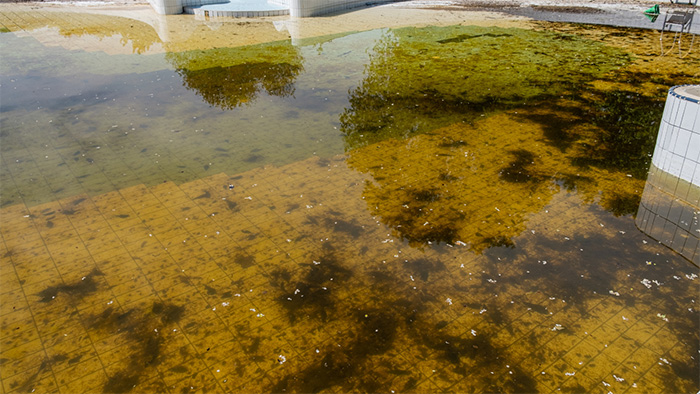Prevent Health Hazards:
Protect Your Facilities From Stagnant Water Risks

Stagnant water is a significant issue in facilities management that demands swift attention. It can result from burst pipes, heavy rainfall, flooding, or sewage backflow. Addressing stagnant water promptly is essential to protect the building’s structural integrity and ensure health and safety. Here’s what to know about stagnant water, its risks, and preventative actions facilities managers can take.
What is Stagnant Water?
Stagnant, or standing, water refers to water that cannot drain away properly from a property, leading to potential health hazards and damage to the building. When left unaddressed, stagnant water quickly becomes a risk to the property’s structure and the health of its occupants.
Immediate Actions for Facilities Managers
If stagnant water is discovered on the premises, taking these steps can help minimise damage:
- Turn Off Water: If the stagnant water is caused by a burst pipe, turn off the main water supply to prevent further build-up.
- Shut Off Electricity: Ensure the affected area’s power supply is off to avoid electrical hazards.
- Contain the Water: Try to prevent water from spreading to other areas.
- Ventilate: Open windows if possible, as stagnant water encourages bacterial growth.
- Seek Professional Help: Contact a drainage expert promptly to address the issue safely.
Risks of Stagnant Water
- Health Hazards: Stagnant water promotes bacteria, mould, and insect growth, posing health risks to building occupants. Standing water can attract vermin and breed mosquitoes, especially if it includes sewage.
- Structural Damage: Stagnant water can seep into foundations, causing dampness, mould, and structural weakening that require costly repairs. Prolonged exposure may damage floors, walls, and other critical building elements.
- Damage to External Surfaces: Outside, stagnant water can deteriorate roads and pavements. If water freezes, it expands, potentially cracking concrete and creating potholes. Pools of water over unseen hazards like open manholes also present serious safety risks.
Preventative Measures
The most effective approach to preventing stagnant water is regular maintenance of your drainage system. Facilities managers should schedule routine inspections for signs of blockages, build‑ups, and leaks in both indoor and outdoor piping. Early intervention can help avoid more severe issues.
Key Signs of Blocked Drains:
- Gurgling sounds from plugholes
- Slow‑draining sinks, toilets, or showers
- Rising water in the toilet after flushing
- Foul odours from drains
- Overflowing manholes or gullies
Regularly cleaning gutters and drainage interceptors is also vital. Enlisting drainage experts for these tasks can help prevent stagnant water from developing.
How Metro Rod Can Help
At Metro Rod, our locally employed drainage experts are fully equipped to manage stagnant water issues of any scale, with national coverage across the UK. As an Exor‑approved and Achilles‑qualified provider, we offer professional water removal services that mitigate damage and restore safety swiftly. Our team will:
- Remove Stagnant Water: Clear all water from the affected area, eliminating any contamination risks.
- Identify the Cause: Trace the root of the issue and resolve it effectively.
- Dry and Sanitize: Thoroughly dry out the area and sanitise it to prevent further issues.
If your facility is experiencing stagnant water issues, contact Metro Rod at 0800 66 8800.
Our team is equipped to provide prompt, professional support.
Click the article to enlarge it.












































